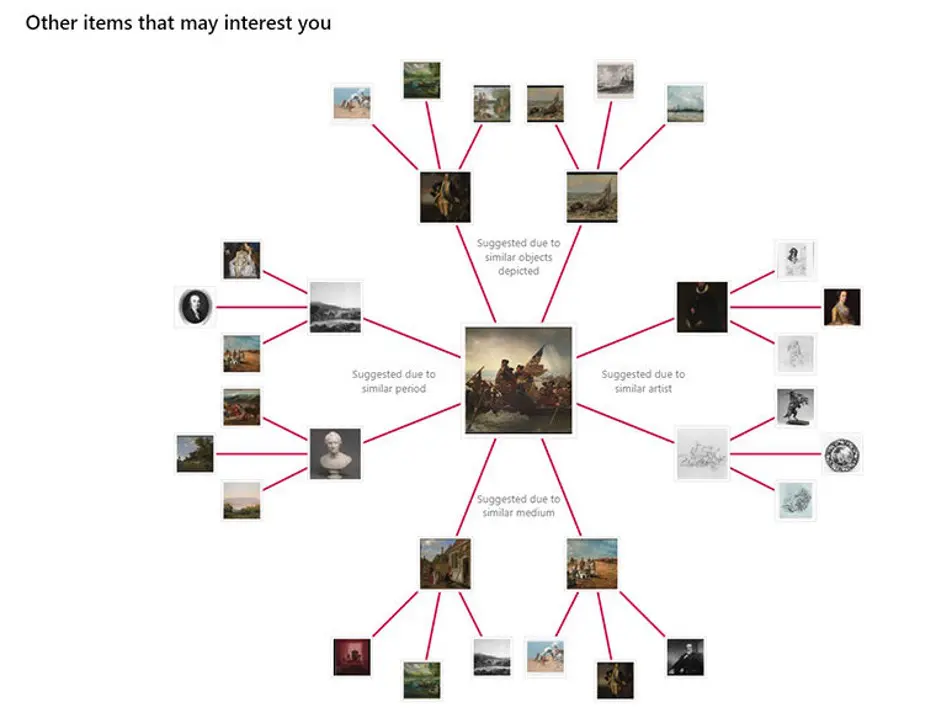Museums Survive the Digital World Through Artificial Intelligence
Museums face the challenge of staying relevant in today’s digital age. Of course, world-renowned museums like the Metropolitan Museum of Art or The Louvre are probably never going to stop being top tourist destinations. But museums, in general, are not primary attractions anymore, especially for the younger audience. So unless museums develop new ways to appeal to the public, they may see fewer visitors over time.
The truth is that many museums are already ahead of their time. Artificial intelligence has proven to be the leading innovative strategy for museums worldwide, from emotional reactions to virtual reality, and the circumstances show that it’s about time.
Enhanced Cognitive Discovery
Nowadays, many museums have free virtual tours available on their websites. These tours have been created with the help of 360-degree cameras and unique computer software. However, AI and machine learning have taken these tours to a whole new level. For example, in collaboration with Microsoft, the Metropolitan Museum of Art has implemented Art Explorer, which serves as an upgraded search engine inside the museum’s collection.
One of the most eye-catching features of the Art Explorer is its exceptionally sophisticated cognitive discovery tool. This AI feature suggests similar artworks in the collection that are similar in style. For example, if you view Van Gogh’s “Olive Trees,” the program can automatically suggest “Cypresses” — another work by Van Gogh and “View from the Artist’s Window, Grove Street” by Robert Frederick Blum. Moreover, you can also see “Demons Fighting Over an Animal Lamb” — a seventeenth-century Indian painting, which, at first glance, wouldn’t have anything in common with Van Gogh. But if you look closer, you can see that the two artworks have a similar pattern. A regular visitor may not have noticed the similarities while physically in the museum, but powerful AI tools like this can detect exciting associations in the catalog for art lovers.
Visual Connections
Art Explorer allows you to view similar artworks on multiple levels through a visual connections map. For example, the machine learning tool can pick paintings with similar objects, painted by the same artist or during a comparable period, and have an analogous medium. The graph below, retrieved from The Met Museum, shows an example of a visual connection you can come across while viewing the Met’s collection online.

Emotional Reactions and Facial Expressions
Another implication of Artificial Intelligence, developed by Stanford University’s Institute for Human-Centered AI , makes the year 3000 seem even closer. The team of scientists came up with a tool that identifies objects in a painting and captures the emotional reaction of viewers and how the art makes them feel.
Based on 81,000 paintings and 440,000 recorded human reactions, the AI tool categorizes a given artwork into eight emotional categories and briefly explains the emotion.
Here are a few examples of how the algorithm responds to some famous works of art:
● “Girl with a Pearl Earring” by Johannes Vermeer – Contentment. “The woman’s eyes are very expressive, and she is dressed nicely.”
● “Starry Night” by Vincent Van Gogh – Awe. “The blue and white colors of this painting make me feel like I am looking at a dream.”
● “The Persistence of Memory” by Salvador Dali – Fear. “It looks like an animal is lying dead on the ground.”
It’s worth mentioning that however accurate AI can be in most cases, emotions are subjective to every individual. There will be cases when some people may experience completely different emotions from the general public. However, AI tools such as this can likely assist museums in engaging audiences. A combination of quantitative and emotional information produced by AI can give museum curators powerful insights.
Bringing Artwork to Life with Virtual Reality
Oculus Quest 2 VR headsets are also increasingly appearing in multiple museums. Contemporary artists even create art that can only be observed through virtual reality. However, many museums also implement AR/VR to offer a remarkable experience of classical artworks.
One of the simplest examples of AR/VR implementation is bringing artworks to life. Some museums have special goggles installed next to specific paintings that visitors can put on and “resurrect” the art. If it’s a portrait, the person depicted will “come alive” and start telling stories about the artwork or the artist. But virtual reality takes this to a whole new level.
For example, the Tate Modern Museum of London offers a never-before-seen opportunity to immerse yourself in Modigliani’s Paris studio precisely as it was 100 years ago. Hilary Knight, the head of digital content at Tate , believes that this project can help one immerse themselves in the artist’s world and understand the meaning behind the artwork even better.
Likewise, the National Museum of Finland has opened a VR exhibit in 2018 that allows you to go back in time to the nineteenth-century Russian Empire. Once pulling on the headset, you find yourself inside the painting “The Opening of the Diet 1863 by Alexander II” by R. W. Ekman. In addition, you can see halls and people in 3D and even chat with the Russian Emperor.
What’s Next?
There’s a fine line between what’s forward-thinking and what’s too much. AI will increasingly dominate our everyday lives, including public institutions like museums. This can serve as an excellent opportunity for museums to “rebrand” themselves and be “cool and engaging” again. They can utilize AI tools to breathe new life into art and analyze and improve organizational processes.
Virtual reality tools are excellent and innovative, but museums should also focus on reshaping their revenue models. For example, could these innovations lead to people not physically visiting museums anymore? If this is the case, museums should think about how they can secure revenue streams and fund the development of this new business model. But the real question is: should the museums even let it all get to that point?
Adopting AI also comes with a bag of ethical responsibilities. Museums should know the rights of visitors and avoid invading their privacy. To what extent can they use their emotions to create socio-economic value? As Angie Judge, a New-Zealand technology entrepreneur, put it: “AI will quickly create a world of the haves and have nots, and I hope the museum sector will find itself on the right side of the equation.”



